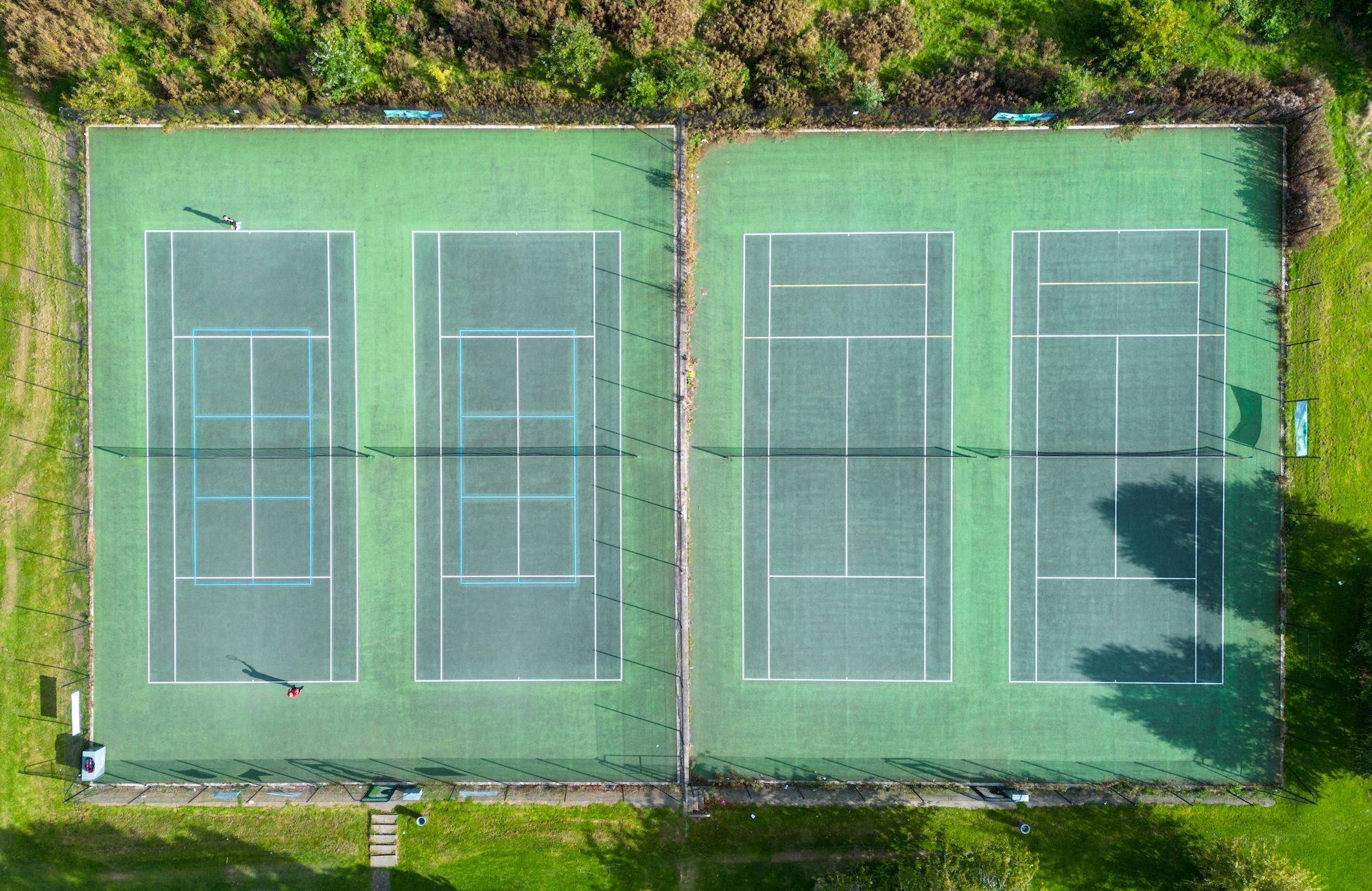Looking for a fun or effective way to torch calories? Padel might be your new favourite workout!
You can burn 500 to 800 calories in just an hour of play - that’s a serious calorie burn for something that feels more like a game than a gym session.
Whether you’re a beginner or a seasoned player, padel offers a full-body workout that fits all fitness levels.
In this guide, we do a deep dive into how padel compares to other racket sports in terms of calorie burn, its advantages over traditional cardio workouts, and practical tips for maximising weight loss through consistent play.
How Many Calories Do You Burn Playing Padel vs Other Racket Sports
Racket sports vary in calorie burn, making some more effective than others for managing weight. Padel stands as a solid middle-ground option with a mix of consistency, intensity, and accessibility.
Padel vs tennis: Calorie comparison
Playing padel for an hour burns around 500 calories on average. Tennis singles burn slightly more, while doubles burns slightly less. Although the figures are close, the way calories are burned differs.

Tennis relies heavily on explosive upper body movements, such as serves and groundstrokes. Padel involves more controlled, lower-body-driven actions. The smaller court and enclosed walls in padel lead to longer rallies and less running, making it more accessible for players seeking steady exercise without tennis’s technical demands.
Padel vs squash: Intensity and energy expenditure
Squash is widely regarded as the most intense racket sport, with players burning between 600 and 900 calories per hour. By comparison, padel is less demanding physically. Studies show padel players use around 40–50% of their maximum oxygen consumption.
Heart rates during padel typically range from 140 to 160 beats per minute — about 70–80% of maximum — which is lower than during squash but still ideal for fat-burning. Padel also shares the effort between doubles partners, unlike squash which is often played solo.
Why padel offers efficient calorie burning
While padel may not top the list for calories burned per hour, it offers distinct advantages that support long-term weight management:
- Consistent movement: Padel’s court design promotes longer rallies and fewer breaks.
- Lower injury risk: The smaller court and controlled movements reduce joint stress.
- Optimal fat-burning intensity: Heart rates stay in the fat-burning zone for much of the game.
- Social motivation: Playing with others builds accountability and makes exercise enjoyable.
Squash might deliver a higher burn per session, but padel’s balance of intensity, fun, and accessibility makes it ideal for consistent weight management.
Comparing Padel to Popular Cardio Workouts for Weight Loss
Traditional cardio exercises are often the go-to for weight loss, but padel offers a dynamic alternative with added benefits that promote long-term success.
Padel vs running: Impact and sustainability
Running is known for burning calories, but it comes with joint strain due to its high-impact nature. Padel, on the other hand, uses shorter, gentler movements that are kinder to knees and ankles.
With the ball kept in play longer, padel avoids the repetitive stress of running. A one-hour padel match can burn as many calories as a vigorous run, but with less risk of overuse injuries. This makes it easier to sustain over time.
Padel vs gym workouts: Engagement and adherence
One of the main challenges with gym workouts is staying motivated. Padel naturally solves this through its social and engaging nature. Doubles play adds accountability, and the game-like format keeps players mentally focused and enjoying themselves.
Studies show social sports improve long-term adherence to fitness routines. Padel doesn’t feel like a chore — players are immersed in the match, not just ticking off reps or miles.
Why Padel Works for Weight Loss Beyond Calories
Padel helps people lose weight in several ways that go beyond just burning calories. These extra benefits make it work better for anyone looking to get fit and stay that way.
The social motivation factor
Padel is rooted in teamwork and camaraderie. Players connect during matches, stick around afterwards for a chat or drink, and often take part in regular events or tournaments. This social aspect makes fitness something to look forward to, not just an item on the to-do list.

Team-based sports like padel are proven to provide stronger mental and emotional support than solo workouts, helping people stay committed to healthy habits.
Full-body engagement and muscle toning
Padel is a full-body workout. Regular players develop stronger legs, glutes, arms, back, abs and core. Fast lateral movements and quick direction changes boost anaerobic fitness and fat burning.
This muscle activation improves posture, builds strength, and raises your resting metabolic rate, helping you burn more calories even when off the court.
Stress reduction and its effect on weight management
Padel also delivers significant mental health benefits. The game requires total focus, which helps clear the mind and reduce daily stress. It also triggers the release of feel-good hormones like dopamine, endorphins, and serotonin, while lowering cortisol (the stress hormone).
This hormonal shift promotes better sleep, reduces emotional eating, and improves decision-making, all key components in healthy weight management.
Adapting Your Padel Play for Different Fitness Levels
Padel works well as a sport for people of all fitness levels, making it a great choice to manage weight, whatever your current fitness level might be.
Beginner modifications to build endurance
Padel’s simple learning curve allows newcomers to get involved quickly. Most players can serve, rally, and enjoy matches on their first try.
Beginners can increase endurance by:
- Walking or cycling to the club
- Using smooth, controlled movements
- Playing short sessions before building up
It’s also recommended to include leg-strengthening and balance exercises to avoid injuries as you progress.
Looking for beginner-friendly padel courts? Explore top-rated clubs and destinations on Global Padel Hub - your ultimate guide to playing padel anywhere in the world.
Advanced techniques for maximum calorie burn
For experienced players, there are several ways to boost intensity:
- Add circuit training to mimic match scenarios
- Use interval sprints and recovery periods
- Include plyometrics like jump squats for explosive movement
A solid training plan should mix aerobic endurance with high-intensity intervals to reflect real match conditions and maximise calorie burn.
Conclusion
Padel is an excellent way to lose weight while enjoying yourself. It offers calorie-burning potential, full-body training, mental wellness benefits, and long-term motivation.
With its adaptable nature, players at any level can meet their fitness goals. Backed by research, padel keeps your heart rate in optimal zones and makes staying fit genuinely enjoyable.
The best part? You’ll be too focused on the fun to realise you’re exercising.
Ready to make padel part of your fitness journey? Start planning your next match with Global Padel Hub, the world’s first platform dedicated to padel discovery.
